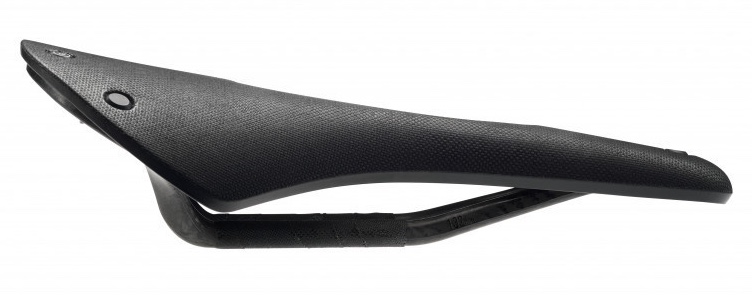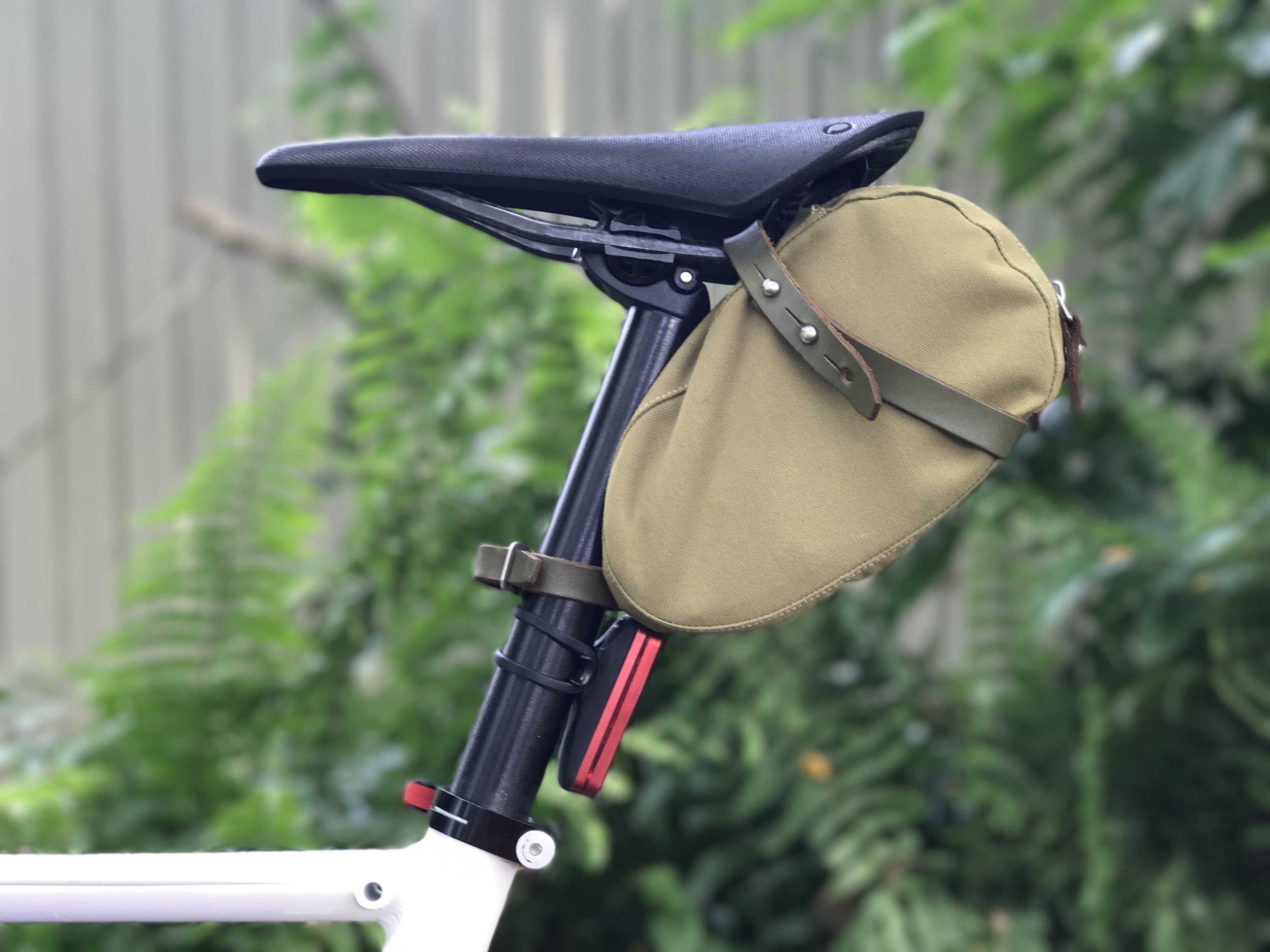Brooks Cambium C13 Carved Saddle Review

The first Brooks Cambium saddle that I bought was the Cambium C15. It has gone on a tour with me through the Noto peninsula in Japan and many more long rides. The cotton canvas surface has weathered nicely like a well worn article of denim. Not too long after, Brooks then came out with a carbon version of the Cambium series – temptation strikes!
General overview
The Brooks Cambium C13 comes in three sizes, and is available in both regular and cut-out models. The narrowest measures at 132mm in width, followed by 145mm and 158mm. The length for all the models measures the same at 275mm with a height of 55mm. The height actually makes it taller than other saddles, so you will definitely need to adjust your seat post when you fix the Cambium C13 to your bike.
Most importantly, make sure that you have a seat clamp that can accept oval rails! The rails are 7x9mm braided carbon which looks absolutely beautiful.
Since I already owned the Cambium C15, I was curious about getting a narrower saddle that suited my narrow sit bone width measurement of 110mm. From my previous tests and experiences, I knew that I needed the model with the cut-out. I picked out the 132mm model which weighs at 250g. Not the lightest carbon saddle out there, but still extremely light for the level of comfort it is supposed to provide.
So how different does the narrowest Brooks Cambium C13 feel against the Cambium C15? Read on to find out!
First impressions
It's quite light, even with the vulcanized rubber top. Compared to my Cambium C15, it weighs 150g less. Yes, there are other carbon saddles out there that weigh less, but the materials are also different and focused more on weight savings rather than all-around comfort. The shape of the Cambium C13 itself is also slightly more rounded than the Cambium C15.
The difference between the Cambium C13 and C15 that I noticed immediately was the "give" of the vulcanized rubber upper. The material used in the Cambium C13 is actually much more compliant and simulates a seasoned leather hammock much better than the Cambium C15. The Cambium C15 feels quite stiff in comparison, whereas the Cambium C13 feels like it molds more readily to your sit bones. At least for me it does.
The Cambium C13 gives the closest feeling of a leather saddle that’s been broken in for years. I don't know how they did it, but they got the formula right for this one!
Better comfort. The elastic comfort comes from the extremely compliant upper. When you put your weight on it, it provides just the right amount of tension without it being too soft or too stiff, and it springs back into shape each time you are off the saddle. It always feels like a well tensioned leather upper, but without any of the worries of sagging leather or the follow-up adjustments that come with leather. And although the saddle itself looks narrow, the 132mm width never feels like it is riding up my behind and actually feels like it is wider than what it seems. This could be due to the rounded contours which help to provide a decent level of comfort when perched.
Slim profile. When riding fast, the slim profile of the Cambium C13 never gives me thigh rub, and not once did I feel any numbness which I'm sure the cutout helps a lot with. The cutout model is also slightly more compliant when compared to the regular model, and that is of course to be expected. Some folks need the cutout, and some folks don't. As saddles are an entirely personal ordeal, that choice depends on the person and it is always best to test it out before making the purchase.
Sleek design. The streamlined design and dark slate color feels at home on both modern and classic bikes alike. You will not have any issues in trying to match it with different color schemes, unless you have a rule against a saddle that is virtually all black.
Long term observation
Practically weatherproof and carefree cleaning. Like the Cambium C15, the leather and canvas upper of the Cambium C13 has a similar waterproof treatment. Road debris, mud and all that stuff wash easily. The design of the rails are extremely clean and there are no hidden areas where dirt can get stuck. A simple spray from the hose is usually enough to dislodge stubborn dirt particles and gets your saddle looking clean without much fuss.
Slightly heavier wear on the canvas upper. Over time, I did notice however that the topmost canvas layer of the Cambium C13 looks a bit more worn out in comparison to the Cambium C15. It is entirely possible that this is more likely to happen on the narrower saddle as the same amount of weight is placed on a smaller surface area. Another cosmetic observation that I had was that the rear edge of the canvas layer started to fray a bit after a few months. You can sort of see it in the main photo of this article. This could simply be my particular batch, but still, that's the only niggle I have about this saddle. It doesn't really detract the functionality of the saddle in any way, and the rest of the canvas layer is pretty solid. But still, for a lot of money, it's those little details that also count.
Sturdy carbon construction. I've ridden on normal roads, rough roads, and areas where the roads disappear into gravel, mud and rocks. Oh, and cobblestones. On skinny tyres no less! Never once did I feel that the carbon rails were in danger of snapping or breaking, and in fact has held up extremely well. For those who are worried about the sturdiness of carbon, this saddle's construction is solid. Did I already mention how beautiful the braided carbon rails look?
Overall verdict
Other than the tiny cosmetic niggles that I have observed, it is a brilliant saddle that manages to combine both comfort and lightweight construction successfully.
Between the Cambium C13 and the Cambium C15, my personal experience tells me that the Cambium C13 wins hands down in terms of comfort – and who could say no to weight savings! The thick carbon rails also help to reduce road vibrations, so it certainly helps to make your overall ride quite comfortable.
If I had to do the purchase again, I might opt for the slightly wider 145mm version for a tad bit more comfort on longer rides, but to be honest the narrowest 132mm model has not given me any problems. It is slightly more on the expensive side though, but if I had to choose an all-purpose saddle and can only choose one, the Cambium C13 wins my vote.
I would give it a full 5 stars, but the slight fraying of the edges of the canvas upper docked half a point. I wasn't expecting to be experiencing that sort of wear after comparing it to my C15, but so far the rest of it has held up quite well.
If you are on a tighter budget, the Cambium C15 is still a great saddle. Read my review of the Brooks Cambium C15 saddle.
Firm believer of the N+1 bike axiom. Always in search of the next awesome route.










